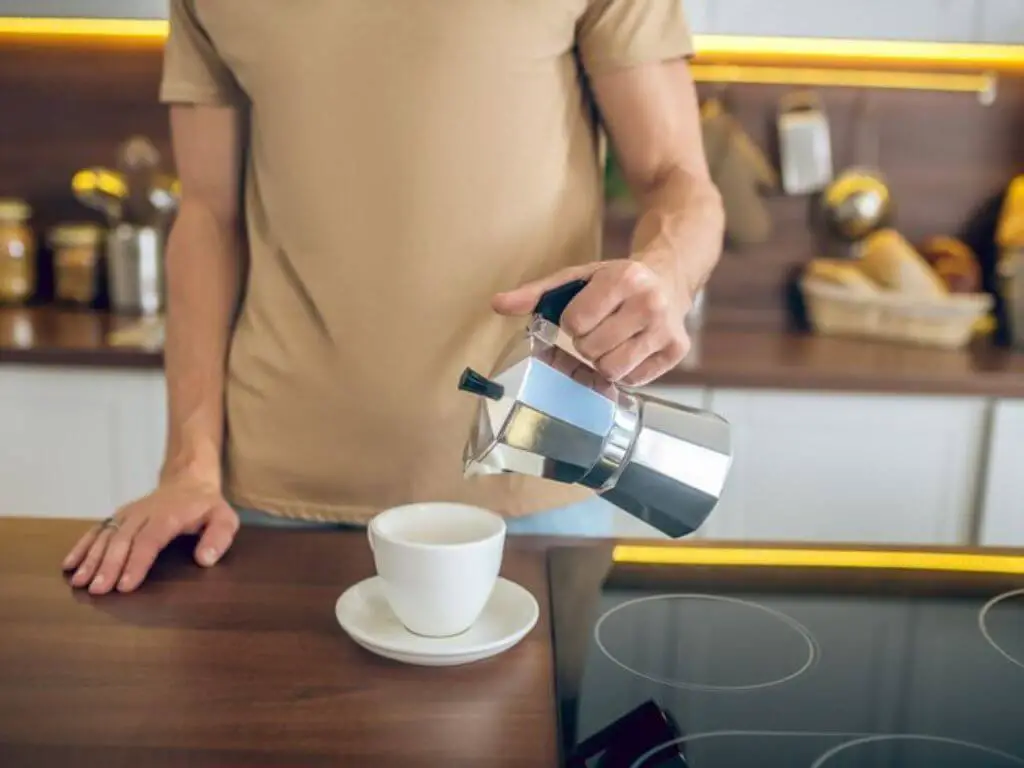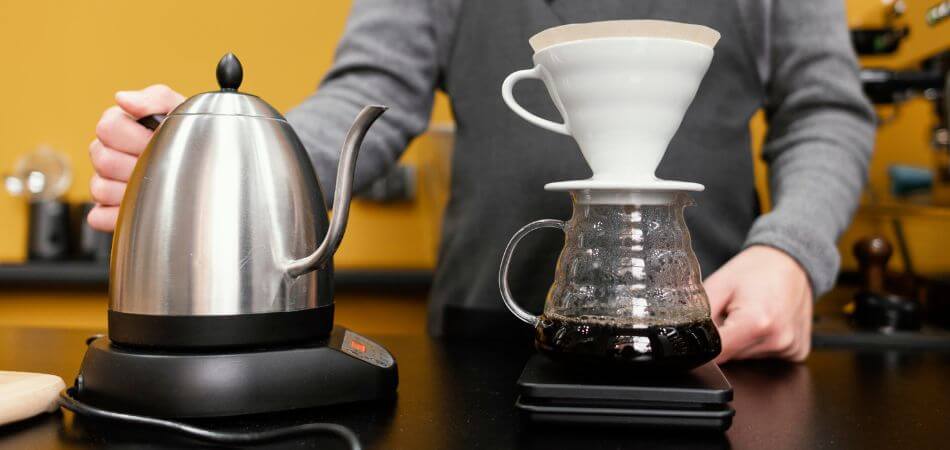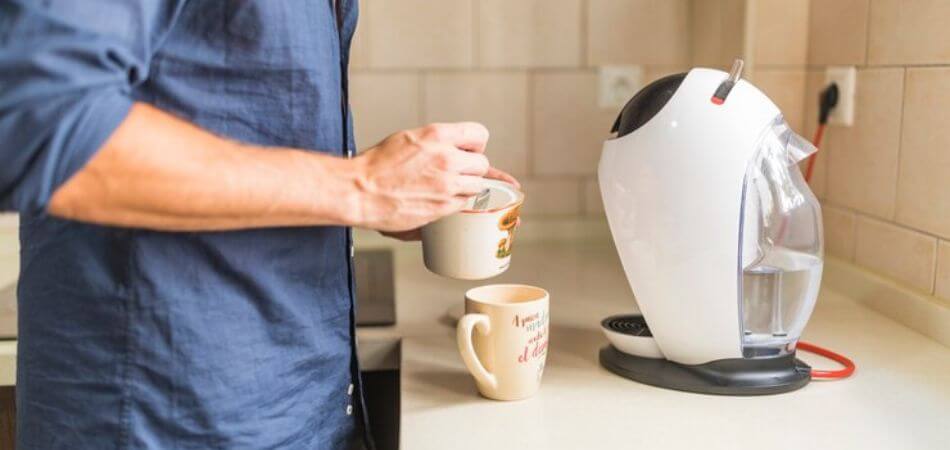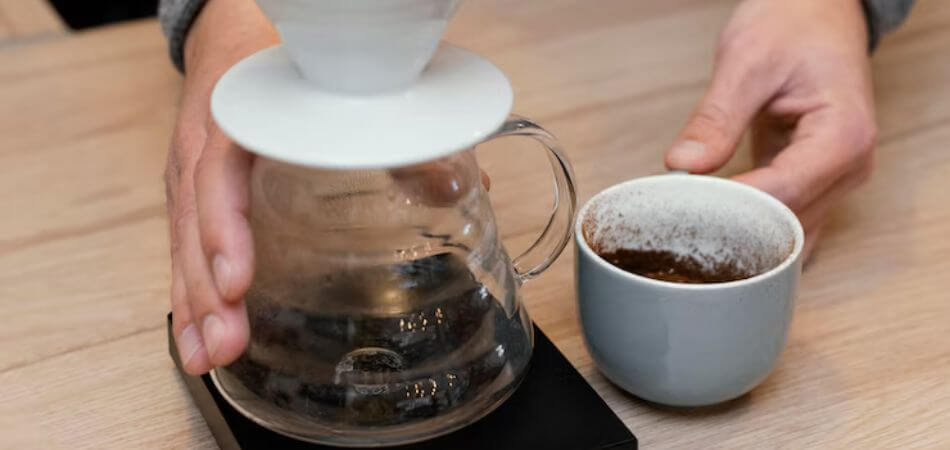How to Clean Your Keurig Coffee Maker: A Step-by-Step Guide

Let’s face it, a clean Keurig coffee maker is a happy Keurig coffee maker. It brews delicious coffee, operates smoothly, and lasts for years. But like any appliance, Keurigs need a little TLC now and then to keep them functioning at their best.
The good news? Cleaning your Keurig is a breeze! This guide will walk you through everything you need to know, from the essential cleaning supplies to step-by-step instructions for both general cleaning and descaling. By following these simple tips, you can ensure your Keurig continues to brew you that perfect cup of coffee for mornings (and afternoons!) to come.

Why Cleaning Your Keurig Matters
Over time, leftover coffee grounds and mineral buildup (scale) can accumulate inside your Keurig. This can lead to a number of problems, including:
- Weaker Coffee: Scale insulates the heating element, making it harder for your Keurig to reach the optimal brewing temperature. This results in a weaker, less flavorful cup of coffee.
- Slow Brewing: Clogged needles and passageways can slow down the brewing process, making you wait longer for your morning cup.
- Noisy Operation: Mineral buildup can cause your Keurig to work harder, leading to increased noise during brewing.
- Machine Malfunction: In severe cases, neglect can lead to malfunctioning or even permanent damage to your Keurig.
- Flavor: Scale and residue can alter the taste of your coffee, making it dull or even bitter.
- Performance: Buildup can clog the machine’s internal components, leading to slow brewing, weak coffee, and even noisy operation.
- Lifespan: A neglected Keurig is more prone to breakdowns and malfunctions.
By regularly cleaning your Keurig, you can prevent these issues and ensure you continue to enjoy delicious coffee for years to come.
Before We Begin: Gathering Your Cleaning Supplies
The beauty of cleaning your Keurig is that it doesn’t require any fancy cleaning products. Here’s what you’ll likely already have on hand:
- Warm soapy water: A gentle dish soap and warm water will do wonders for cleaning the removable parts of your Keurig.
- Soft cloths or sponges: Avoid abrasive scrubbers that could scratch the delicate surfaces.
- Paperclip (optional): This can be a handy tool for unclogging the needle in the K-cup holder. Some Keurigs may even come with a designated cleaning tool.
- Keurig descaling solution (optional): While white vinegar is a popular option for descaling, some Keurig models recommend using a Keurig-brand descaling solution. We’ll discuss this further in the descaling section.
- Keurig user manual (highly recommended): While the general cleaning steps apply to most Keurigs, it’s always best to consult your user manual for any specific instructions or recommendations for your particular model.
- Microfiber cloth: This will help give your Keurig’s exterior a nice shine.
With these simple tools in hand, you’re ready to give your Keurig some love!
Step-by-Step Guide to General Cleaning Your Keurig
Now that you’re armed with your cleaning supplies, let’s dive into the process of giving your Keurig a refresh. Remember, for safety reasons, always unplug your Keurig before cleaning.
- Unplug the Power:
Safety first! Always unplug your Keurig before any cleaning or maintenance.
- Disassemble the Removable Parts:
First things first, identify the removable parts of your Keurig. This typically includes the water reservoir, lid, drip tray, and K-cup holder. Consult your Keurig’s manual if you’re unsure about any specific parts.
- Wash the Removable Parts:
Fill a sink with warm, soapy water. Gently wash the reservoir, lid, drip tray, and K-cup holder (minus the needle for now) with the soapy water. You can use a soft cloth or sponge to remove any coffee residue or grime.
Pro Tip: If you find stubborn coffee grounds clinging to the reservoir or drip tray, a soft brush can help dislodge them.
- Clean the K-Cup Holder with Care: This part requires a bit more attention due to the sharp needle at the bottom that punctures the K-cups. Avoid touching the needle directly. Here’s how to clean it safely:
- Option 1 (Paperclip): Straighten out a paperclip and carefully insert it into the needle from the top. Gently move the paperclip up and down to dislodge any coffee grounds stuck inside.
- Option 2 (Cleaning Tool): Some Keurigs come with a designated cleaning tool for the needle. Refer to your Keurig’s manual for specific instructions on using this tool.
Important: After cleaning the needle, rinse the K-cup holder thoroughly with warm water.
- Wipe Down the Exterior: Use a damp microfiber cloth (or a soft, damp cloth) to wipe down the exterior of your Keurig. This will remove any dust, fingerprints, or coffee splatters.
- Reassemble and Dry: Once all the parts are clean and rinsed, allow them to air dry completely before reassembling your Keurig. Never plug in a Keurig with wet parts!
Tip: While the parts are drying, you can run a cleaning cycle with just fresh water to flush out any residual cleaning solution from the internal tubes. Simply fill the reservoir with fresh water, select the largest cup size, and brew a cycle without a K-cup.
By following these simple steps, you’ll have your Keurig’s removable parts looking and functioning like new in no time!

Descaling: Fighting Mineral Buildup
Now that you’ve mastered general cleaning, let’s tackle descaling. Descaling removes mineral buildup (scale) that accumulates inside your Keurig from hard water. This buildup can affect your coffee’s taste and brewing performance.
Here’s why descaling is important:
- Improved Coffee Taste: Scale can alter the taste of your coffee, making it bitter or metallic. Regular descaling ensures your coffee always tastes fresh and delicious.
- Optimal Brewing Performance: Mineral buildup can clog the internal passages in your Keurig, leading to slow brewing or uneven water distribution. Descaling helps maintain optimal brewing performance.
- Longer Keurig Lifespan: By removing scale buildup, you’re preventing potential damage to your Keurig’s internal components. This helps extend the life of your coffee maker.
While general cleaning is recommended weekly, descaling doesn’t need to be done as frequently. The frequency depends on two factors:
- Water Hardness: Hard water has a higher mineral content, leading to faster scale buildup. If you have hard water, you’ll need to descale more often.
- Keurig Usage: The more you use your Keurig, the faster scale accumulates.
As a general guideline, descaling every 3-6 months is recommended. However, some Keurigs have a descaling alert light that will notify you when it’s time to descale. Always consult your Keurig’s manual for specific recommendations based on your water hardness and model.
Descaling Supplies: Choosing Your Weapon
Now that you understand the importance of descaling, let’s explore the tools you’ll need to fight mineral buildup:
- Keurig Descaling Solution (Optional): Keurig offers a descaling solution specifically formulated for their machines. It’s readily available online and in many stores.
- White Vinegar (Alternative): If you prefer a more natural approach, white vinegar can be an effective substitute for Keurig descaling solution. However, it’s important to note that Keurig doesn’t always recommend using vinegar, and some models may have specific instructions for using it.
Here’s a quick breakdown of the pros and cons to help you decide:
Keurig Descaling Solution
- Pros: Formulated specifically for Keurigs, may be more effective at removing scale, eliminates the vinegar smell during the process.
- Cons: Additional cost compared to using vinegar.
White Vinegar
- Pros: Cost-effective, readily available in most households.
- Cons: May leave a slight vinegar smell during the descaling process, Keurig may not recommend it for all models.
Important: Before making your choice, consult your Keurig’s manual. It will specify the recommended descaling solution and any specific instructions for using vinegar if it’s an option.
Step-by-Step Guide to Descaling Your Keurig
With your chosen descaling solution in hand, it’s time to tackle that mineral buildup! Here’s a step-by-step guide to descaling your Keurig:
Important Note: Always refer to your Keurig’s manual for specific descaling instructions, as the process may vary slightly depending on your model. This guide provides a general overview.
- Prepare Your Keurig:
- Unplug your Keurig from the power outlet.
- Empty the water reservoir and remove any K-cup from the holder.
- Depending on your model, you may need to remove a water filter cartridge (consult your manual).
- Choose Your Descaling Solution:
- Follow your Keurig’s manual to determine the recommended descaling solution and quantity. This information might be printed on the manual or readily available online for your specific model.
- Descaling Process:
- Pour the designated amount of descaling solution (either Keurig solution or vinegar, depending on your choice) into the water reservoir.
- Fill the reservoir with fresh water to the designated fill line (usually marked with a “Descale” line).
- Place a large mug (at least 10 ounces) on the drip tray.
- Run the Descaling Cycle:
- Depending on your model, you might need to initiate a specific “Descale” cycle. Refer to your manual for instructions specific to your Keurig. In general, you’ll likely choose the largest cup size option and brew a cycle without a K-cup.
- Allow the descaling cycle to run completely. This may take about 30 minutes, depending on your model.
- Water Rinse Cycles:
- Once the descaling cycle is complete, discard the contents of the mug. You may notice some mineral deposits in the discarded liquid.
- Your Keurig’s manual will likely recommend running several rinse cycles with fresh water to remove any residual descaling solution. Typically, you’ll fill the reservoir to the “Max Fill” line with fresh water and run a brewing cycle without a K-cup. Repeat this rinsing process as instructed by your manual (usually 2-3 times).
Tip: While the rinse cycles are running, you can take a moment to wipe down the K-cup holder with a damp cloth to remove any loosened mineral deposits.
- Reassemble and Enjoy:
- After completing the rinse cycles, empty the water reservoir and refill it with fresh water.
- Reassemble your Keurig (including any water filter cartridge you removed) and plug it back in.
- You’re now ready to enjoy a delicious cup of coffee brewed with a clean and descaled Keurig!

Bonus Tips for Keurig Care: Keeping Your Coffee Maker Happy
Now that you’ve mastered both general cleaning and descaling, here are some bonus tips to keep your Keurig functioning optimally for years to come:
- Deep Cleaning the Needle (For Specific Models): Some Keurig models allow for deeper cleaning of the needle in the K-cup holder. Always consult your manual before attempting this, as the process may vary depending on the model. The manual will typically specify if deep cleaning is possible and provide instructions on how to do it safely.
- Using a Keurig Water Filter: Hard water is the main culprit behind mineral buildup. Consider using a Keurig water filter to reduce the frequency of descaling. The filter helps trap impurities and minerals before they enter your Keurig, resulting in cleaner water for brewing and less scale buildup.
- Running a Cleaning Cycle with Fresh Water for Long-Term Storage: If you plan to store your Keurig for an extended period, it’s recommended to run a cleaning cycle with fresh water before storage. This helps remove any leftover residue or mineral deposits that could build up during storage.
By following these simple cleaning and care tips, you can ensure your Keurig continues to brew you delicious coffee for mornings (and afternoons!) to come. Remember, a clean Keurig is a happy Keurig, and a happy Keurig means happy coffee drinkers!
Conclusion: Brewing Bliss Awaits!
Congratulations! You’ve now learned everything you need to keep your Keurig coffee maker clean and functioning at its best. By incorporating both regular general cleaning and periodic descaling into your routine, you can ensure your Keurig continues to brew delicious coffee for years to come.
Remember, the cleaning process doesn’t require fancy equipment or harsh chemicals. With a few simple household items and these easy-to-follow steps, you can give your Keurig the TLC it deserves. So, the next time you crave a cup of coffee, you can be confident that your Keurig is ready to deliver a fresh, flavorful brew. Now go forth and enjoy the brewing bliss that awaits!
FAQs:
What can I use to clean the carafe or drip tray?
You can use warm, soapy water and a soft cloth or sponge to clean the carafe and drip tray. Some carafes and drip trays may even be dishwasher-safe (double-check your Keurig’s manual).
Can I use a strong cleaning solution?
Avoid using harsh chemicals or abrasive scrubbers on your Keurig, as they can damage the surfaces. Stick to warm, soapy water and a soft cloth for general cleaning.
What is descaling, and why is it important?
Descaling removes mineral buildup (scale) that accumulates inside your Keurig from hard water. This buildup can affect your coffee’s taste and brewing performance. Regular descaling helps maintain optimal performance and extends the life of your Keurig.
How often should I descale my Keurig?
The frequency of descaling depends on two factors: water hardness and Keurig usage. Generally, descaling every 3-6 months is recommended. However, some Keurigs have a descaling alert light that will notify you when it’s time. Always consult your Keurig’s manual for specific recommendations based on your water hardness and model.
Can I use vinegar to descale my Keurig?
White vinegar can be an effective substitute for Keurig descaling solution, but it’s not always recommended by Keurig. Some models may have specific instructions for using vinegar. Always consult your Keurig’s manual before using vinegar for descaling. Keurig descaling solution is formulated specifically for their machines and may be more effective at removing scale.
Can I use a Keurig water filter to reduce descaling frequency?
Yes, using a Keurig water filter can help reduce the frequency of descaling by trapping impurities and minerals before they enter your Keurig.
How do I clean the needle in the K-cup holder?
Some Keurig models allow for deeper cleaning of the needle. Always consult your manual before attempting this, as the process may vary depending on the model. The manual will typically specify if deep cleaning is possible and provide instructions on how to do it safely.







